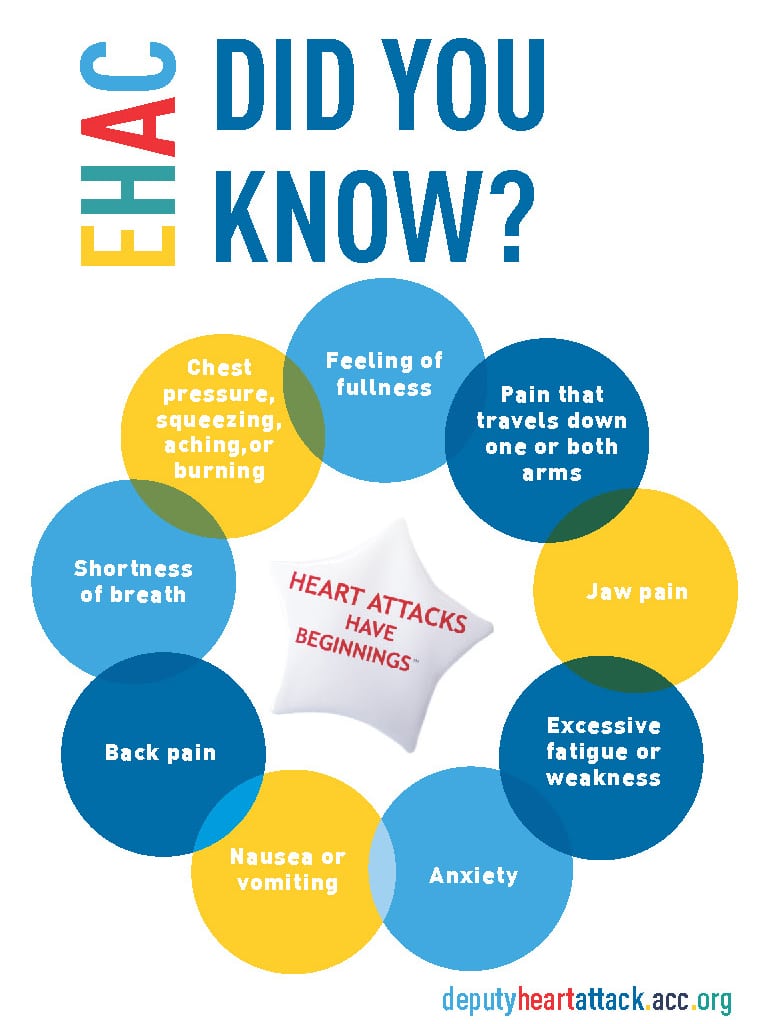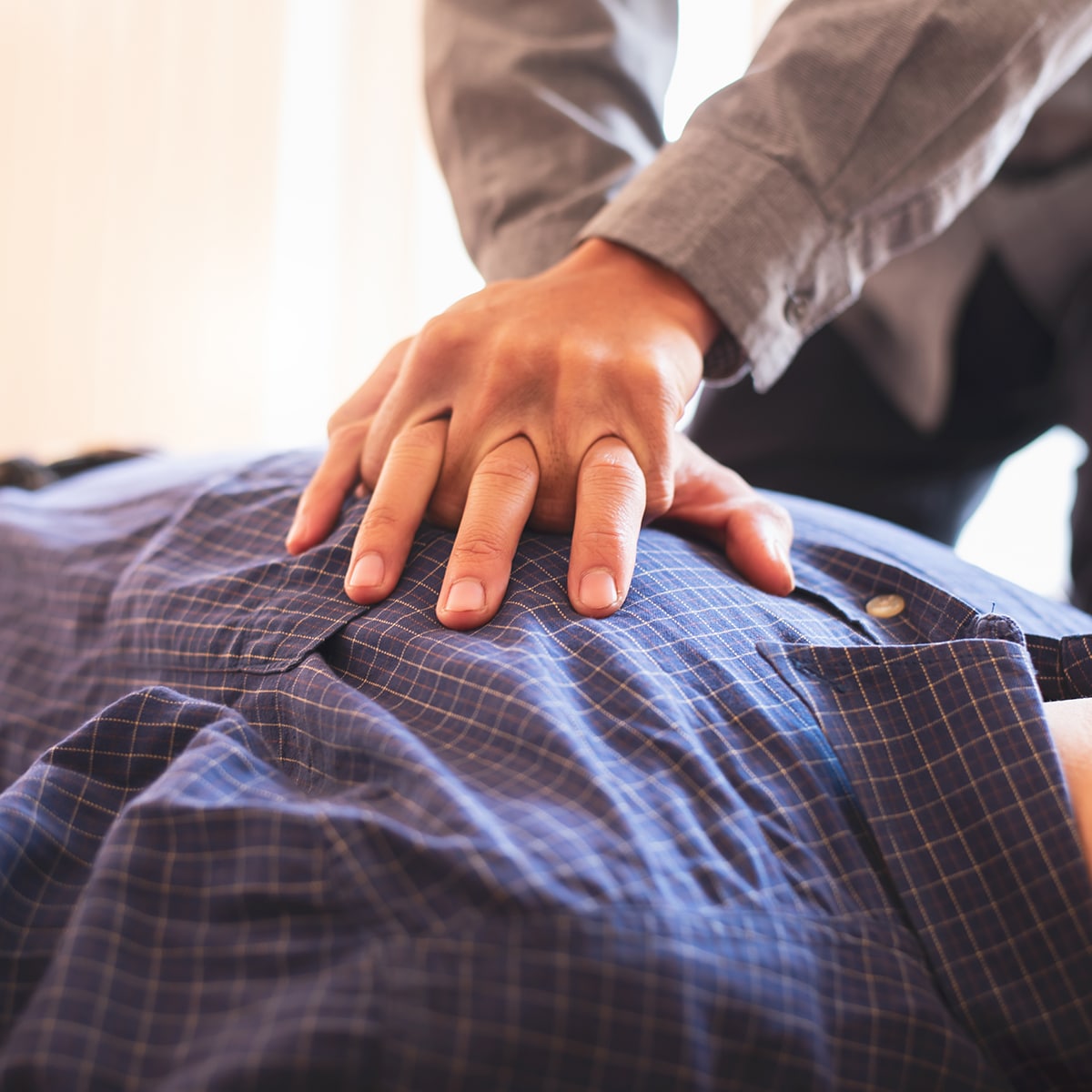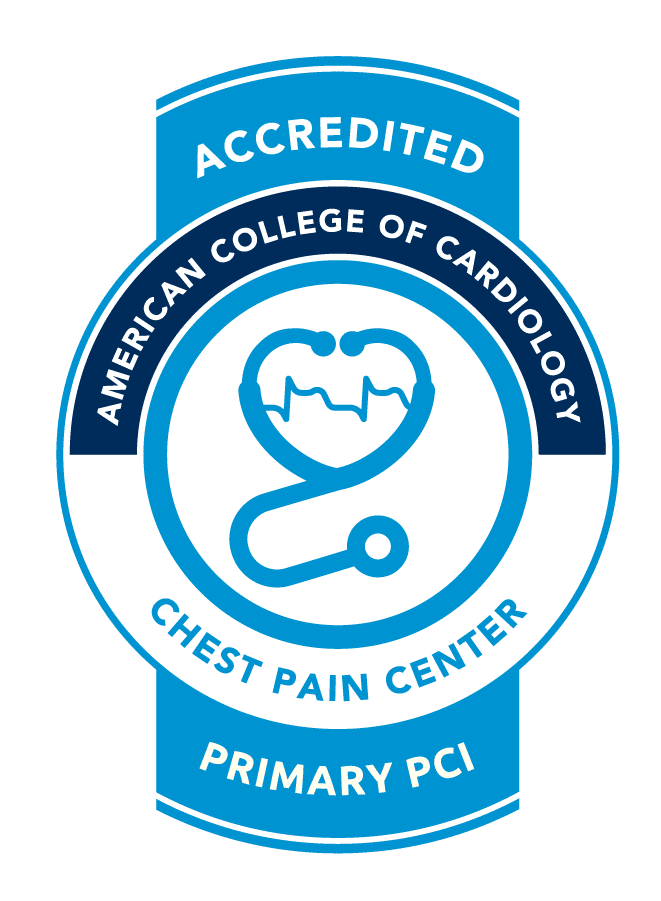Early Heart Attack Care
If you suspect someone close to you is having a heart attack, call 9-1-1 immediately. Do not attempt to drive to the hospital! An ambulance is the fastest, most efficient way to reach the emergency room. In most cases, treatment can begin when EMS arrives.

Heart attacks have beginnings. Learning the early stages of a heart attack can save a life! About 750,000 people in the U.S. have heart attacks each year. Of those, about 116,000 die. Many of these patients experienced early symptoms:
- Chest pressure, squeezing, aching or burning
- Feeling of fullness
- Pain that travels down one or both arms
- Jaw pain
- Excessive fatigue or weakness
- Anxiety
- Nausea or vomiting
- Back pain
- Shortness of breath
Someone might have one or more of these common symptoms. When they start, they can be mild or come and go. Over time, the symptoms and pain become more intense. Stay alert and always pay attention to chest pressure.
Did you know?
Most heart damage can occur within the first two hours of a heart attack. Early Heart Attack Care encourages you to know the subtle signs of a heart attack and act on them before heart damage occurs.
What are the risk factors?
These are the general risk factors for a heart attack. Discuss your risk with your doctor.
- Chest pain, pressure, burning, aching or tightness – it may come and go
- A family history of cardiovascular disease
- High blood pressure
- Overweight or obese
- Sedentary lifestyle
- Using tobacco products
- Metabolic disease, diabetes or other illnesses
- For women it can also include birth control pills, a history of pre-eclampsia, gestational diabetes or having a low birth weight baby
What is the difference? MEN vs WOMEN
Some heart attack symptoms can be different between men and women. Why does it matter? Women may be less likely to seek immediate medical care, which can cause more damage to the heart.
- Men normally feel pain and numbness in the left arm or side of chest, but in women, these symptoms may appear on the right side.
- Women may feel completely exhausted, drained, dizzy or nauseous.
- Women may feel upper back pain that travels up into their jaw.
- Women may think their stomach pain is the flu, heartburn or an ulcer.
What are ATYPICAL PRESENTATIONS?
In an atypical presentation, the signs and symptoms are different. How? The patient may not complain about pain or pressure in the chest. Be alert for the following:
- A sharp or “knife-like” pain that occurs with coughing or breathing.
- Pain that spreads above the jawbone or into the lower body.
- Difficult or labored breathing.
To learn more about Early Heart Attack Care, visit deputyheartattack.acc.org.
Content copyright American College of Cardiology Foundation. Used by permission.

The Medical Center at Bowling Green is an Accredited Chest Pain Center with Primary PCI.


